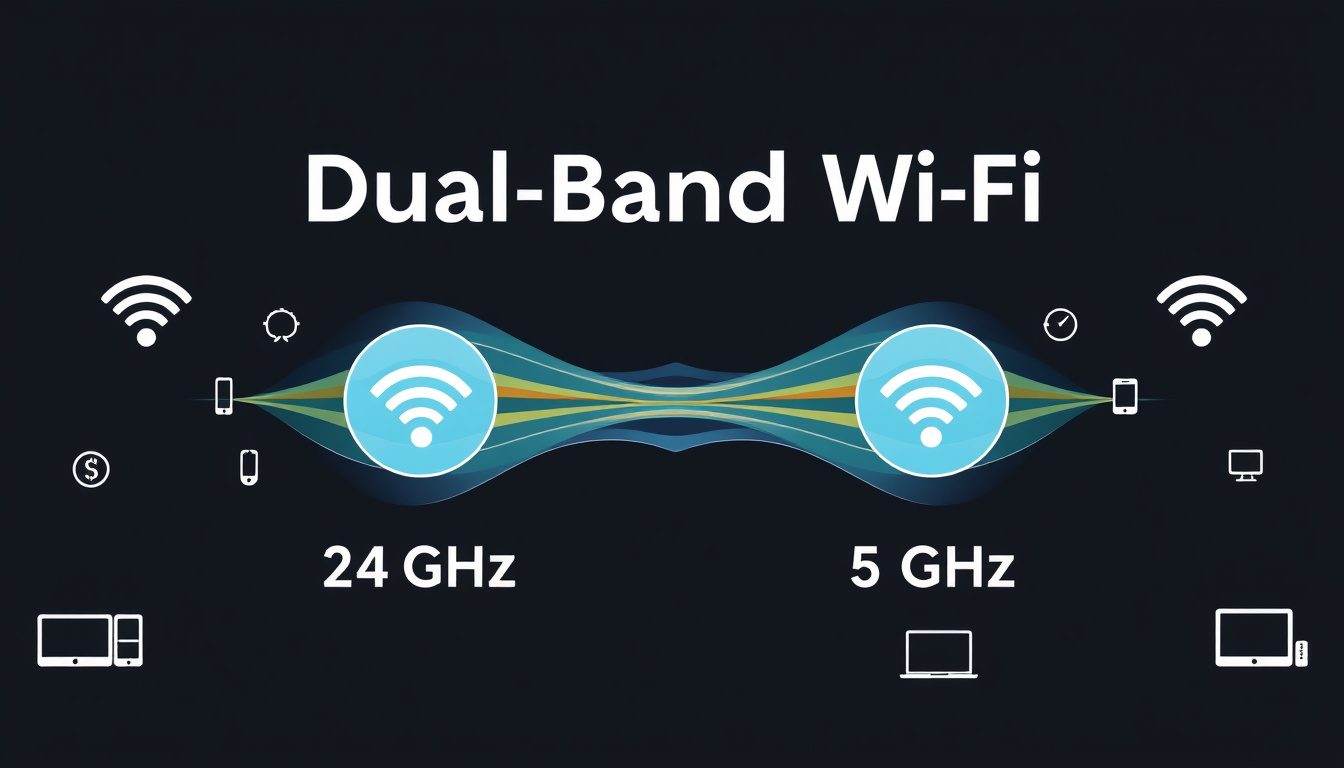In our increasingly connected world, ensuring a reliable and fast Wi-Fi connection is more crucial than ever. One of the best ways to achieve optimal performance for your home network is by utilizing dual-band frequencies. Dual-band Wi-Fi routers are equipped to operate on two different frequency bands—2.4 GHz and 5 GHz. Understanding how these frequencies work can significantly enhance your overall Wi-Fi experience.

What are Dual-Band Frequencies?
Dual-band Wi-Fi routers transmit data on both the 2.4 GHz and 5 GHz frequency bands, allowing for more versatility and efficiency in your wireless network. Each frequency band offers unique advantages and disadvantages, providing you with options based on the specific needs of your household and devices.
2.4 GHz Frequency Band
The 2.4 GHz frequency was the original band for Wi-Fi transmission and has several appealing attributes:
- Extended Range: It can cover a larger area, allowing for better connections in homes with multiple floors or thick walls.
- Penetration Abilities: This band is better at penetrating solid objects, which is crucial in maintaining a strong signal throughout your home.
However, there are downsides:
- Higher Interference: The 2.4 GHz band is often crowded due to interference from other networks and household devices such as microwaves and wireless cameras, leading to slower speeds.
- Lower Speeds: Users can typically expect maximum speeds below 100 Mbps, which may not support high-bandwidth activities like streaming or gaming efficiently.
5 GHz Frequency Band
To combat some of the limitations of the 2.4 GHz band, the newer 5 GHz frequency was introduced. It brings several advantages:
- Faster Speeds: This frequency can support higher data rates, often delivering internet speeds four times faster than 2.4 GHz.
- Reduced Interference: With more channels available, this band experiences less interference from neighboring devices and networks.
However, it also has a few drawbacks:
- Limited Range: The 5 GHz signal doesn’t penetrate walls or obstacles as effectively, resulting in a shorter effective range.
- Best for Close Proximity: Devices need to be relatively close to the router to benefit fully from the higher speeds.
Understanding How Dual-Band Routers Work
Dual-band routers automatically decide which frequency to connect devices based on various factors such as signal strength and traffic load. You can also manually choose which band to use, depending on the device’s location and intended use. Some advanced routers feature "band steering," which optimizes performance by directing devices to the best available frequency based on current network conditions.
Choosing the Right Frequency
- Use 2.4 GHz for Greater Range: If your device is far from the router or if you need a connection that can navigate through walls easily, the 2.4 GHz band is preferable.
- Use 5 GHz for Speed: If you are engaging in high-bandwidth activities like online gaming, video conferencing, or streaming 4K content, connect your device to the 5 GHz band for optimal performance.
Conclusion: Improve Your Wi-Fi Experience with Dual-Band Frequencies
Adopting a dual-band router can greatly enhance your online experience by providing both versatility and improved performance. By understanding the specific strengths of the 2.4 GHz and 5 GHz bands, you can configure your home network to meet your unique demands. Whether you require extended coverage or higher speeds, utilizing dual-band frequencies effectively will keep you connected with minimal interruptions. Embrace the power of dual-band technology and unlock the full potential of your Wi-Fi today!



